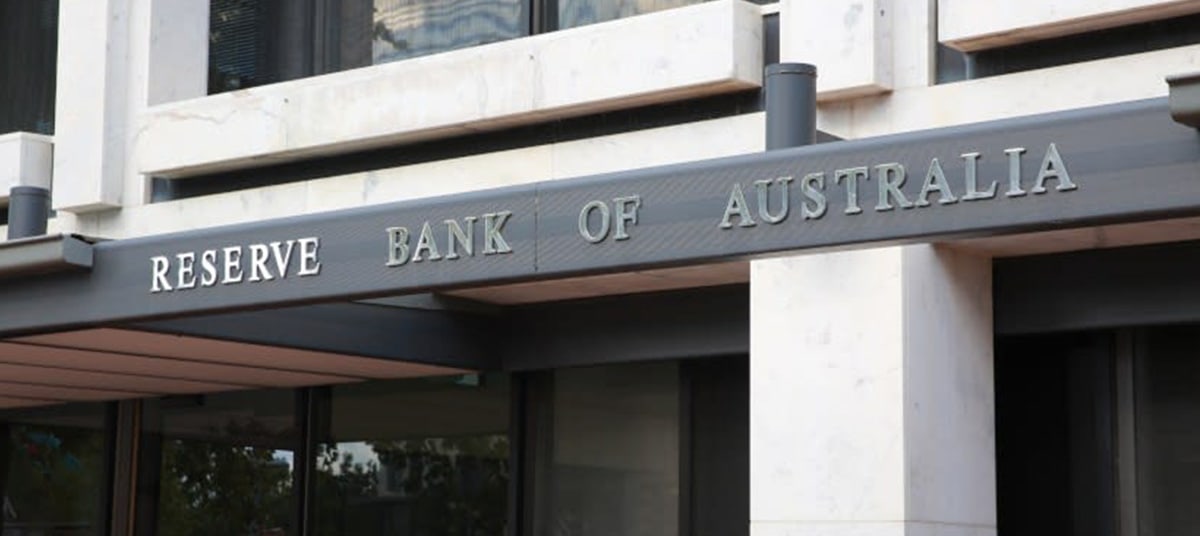
The Monetary Policy Board has made its decision for the official cash rate for the month.
The Reserve Bank of Australia (RBA) has opted to maintain the official cash rate at its current rate of 3.85 per cent.
Following discussions on 7 and 8 July, the Monetary Policy Board announced its final rate decision this afternoon (8 July), surprising the market by holding the official cash rate at its current level.
In the first unattributed record of votes in the post-meeting statement, it was revealed that the move was made by majority; 6 in favour, 3 against.
In the post-meeting statement by the RBA, the board highlighted the surprisingly tight labour market and decreased trade uncertainty as arguments to keep the cash rate on hold.
"The board continues to judge that the risks to inflation have become more balanced and the labour market remains strong. Nevertheless, it remains cautious about the outlook, particularly given the heightened level of uncertainty about both aggregate demand and supply.
"The board judged that it could wait for a little more information to confirm that inflation remains on track to reach 2.5 per cent on a sustainable basis. It noted that monetary policy is well placed to respond decisively to international developments if they were to have material implications for activity and inflation in Australia.
"The board will be attentive to the data and the evolving assessment of risks to guide its decisions. In doing so, it will pay close attention to developments in the global economy and financial markets, trends in domestic demand, and the outlook for inflation and the labour market. The Board is focused on its mandate to deliver price stability and full employment and will do what it considers necessary to achieve that outcome."
In the post-meeting press conference, RBA governor Michele Bullock added that the board was "waiting to confirm" if quarterly inflation was "still on track to meet inflation and employment objectives".
She flagged that while recent monthly CPI Indicator data suggest that June quarter inflation is likely to be broadly in line with the forecast, they were, at the margin, slightly stronger than expected.
With the cash rate 50 bps lower than five months ago and wider economic conditions evolving broadly as expected, the board therefore judged that it could wait for a little more information to confirm that inflation remains on track to reach 2.5 per cent on a sustainable basis.
She said: "I think the board, in its decision, is being cautious, it's being careful, and it is trying to make sure that it gets this right. This has paid off well for us. We've been cautious for a while now and I think it's paying off. And I think you just have to look at where we are - and we can continue this cautious approach. And if something external comes, then we can react. Because we've got room to move," governor Bullock said.
The vast majority of bank economists had expected the RBA to reduce the cash rate today, with all four of Australia’s major banks predicting a 25-bp reduction.
This move would have brought the cash rate down to 3.60 per cent, marking the third cut in the current easing cycle (which began in February of this year) and the first consecutive rate cut for five years (since March 2020).
Australian banks largely expected a cash rate drop because recent inflation data, particularly the trimmed mean and overall monthly Consumer Price Index (CPI) indicator, had fallen comfortably within the Reserve Bank of Australia’s (RBA) 2–3 per cent target band, reinforcing confidence that inflation is now under control.
However, some had suggested that the central bank may wait for the release of quarterly inflation figures (to be released on 30 July) and new economic forecasts, such as Labour Force data, before moving the official cash rate again.
Indeed, several bank economists had suggested that a July rate cut was not a foregone conclusion, with CBA’s Belinda Allen stating it “not a done deal”, particularly as the cutting cycle had so far been paced at one drop per quarter (giving the RBA time to see the most recent quarterly CPI data before easing).
Similarly, Westpac’s chief economist Luci Ellis also cautioned last month that a July reduction to the cash rate was ”not the shoo-in the market seems to think it is”, noting that monthly CPI indicators would not typically “tip the balance” for the RBA.
However, Ellis suggested that the “arguments to wait were not compelling”.
ANZ’s Adam Boyton also stated last week: “That decision [to lower rates in July] will likely reflect the RBA’s Monetary Policy Board concluding that a 25bp reduction in the cash rate in July is the path of least regret, rather than waiting for the August Statement of Monetary Policy (SMP) and a full forecast update, as has been the RBA’s approach to the prior two rate cuts and the November 2023 tightening.”
Are cuts on the horizon?
Despite the decision to hold the cash rate today, expectations are that the board will reduce the cash rate at its next meeting, which will be held between 11 and 12 August.
While the majors will likely reassess their forecasts to digest the Monetary Policy Board’s rationale for holding given the surprise decision today, several had already forecast a rate reduction in August.
Ahead of the cash rate decision today, the forecasts were as follows:
- ANZ: 25-bp rate cuts in July and August, followed by “an extended pause” once the cash rate reaches 3.35 per cent.
- CBA: 25-bp rate cuts in July, August, and another in “late 2025 or early 2026” (data-dependent).
- NAB: 25-bp rate cuts in July and August.
- Westpac: 25-bp rate cuts in July, November, and two more 25-bp cuts in either late 2025 or early 2026.
The next cash rate decision will take place on 11–12 August, with the decision being handed down at 2:30pm on 12 August.
What does the broking industry think?
Several leaders of the broking industry have noted that borrowers and prospective buyers will be disappointed by the decision.
Reacting to the decision, Mortgage & Finance Association of Australia CEO Anja Pannek said: “The Reserve Bank’s decision to stick with the status quo and not lower the official cash rate may have come as a shock given that most economists had predicted a cut of 25 basis points."
However, she noted that while "borrowers were hoping for another cut in July to further ease the pressure on their mortgage payment", there is "still an opportunity for mortgage brokers to talk to their clients about repricing, refinancing or other options such as consolidating debt to put them in a better financial position".
Peter White AM, managing director of the Finance Brokers Association of Australia (FBAA), added that lower rates would likely "incentivise more people to enter the housing market".
"However, whatever the RBA does, when you consider the new places that have opened up with Australia’s Home Guarantee Scheme and other government incentives, there has not been a better time to enter the property market or refinance since rates started to rise in 2022".
While noting the ongoing supply issues, White added: "Interest rates, while extremely important, are not the only factor to consider and finance and mortgage brokers are obligated to act in the best interests of the customer, unlike banks, which are unable to do this.
"It is vital for brokers to be proactive at this time, to reach out to clients and discuss their needs. Remind them that your focus is their best interests and provide solutions that consider their individual circumstances. In the current market the service provided by brokers is more important than ever."
Aggregators and brokerage heads have also started responding to the rate decision.
Anthony Waldron, the CEO of brokerage Mortgage Choice, commented that the RBA may have been waiting for the quarterly CPI figures before considering another cut to the cash rate, adding that “the tight labour market would have been another factor behind the RBA’s decision to keep the cash rate on hold because of the upward pressure low unemployment can have on inflation”.
However, he added: “Today’s decision doesn’t mean further cuts are off the table. There are four monetary policy board meetings still to go this year, so rates could drop further.
“If the June quarter Consumer Price Index released later this month shows that inflation remains within the RBA’s target range, we could see the RBA deliver a cut at its August meeting.
“I encourage borrowers and buyers to take this time to chat to their mortgage broker to see how they can put their best foot forward ahead of future rate cuts.”
Mark Haron, executive director at Connective, commented: “The RBA may have held steady today, but borrower expectations have not. With inflation softening and cost-of-living pressures still front-of-mind, borrowers will remain active, and many will continue reviewing their loans in anticipation of future rate cuts.
“This environment keeps competitive pricing and lender response times in sharp focus, which naturally positions brokers to guide their clients in navigating what this means for them.
“The expectation is that there is potential for one or two rate cuts before year-end, if inflation continues to moderate.”
Finsure CEO Simon Bednar had expected the RBA to reduce the cash rate today, stating ahead of the meeting: “Monthly CPI data for May of 2.1 per cent was in line with the RBA’s target range and signals a slowing of economic growth.”
He added that he believed there would be another two rate reductions before the end of the year.
“The volatility of US tariffs coupled with general uncertainty in the economy will continue to put pressure on growth through to Christmas this year,” Bednar said.
“This will give the RBA reason to consider a couple more cuts with the cash rate likely to be at 3.1 per cent by December 31, which will be the lowest it has been since December, 2022.”
[Related: Borrowers urged to ask lenders when they will action expected rate cut]

